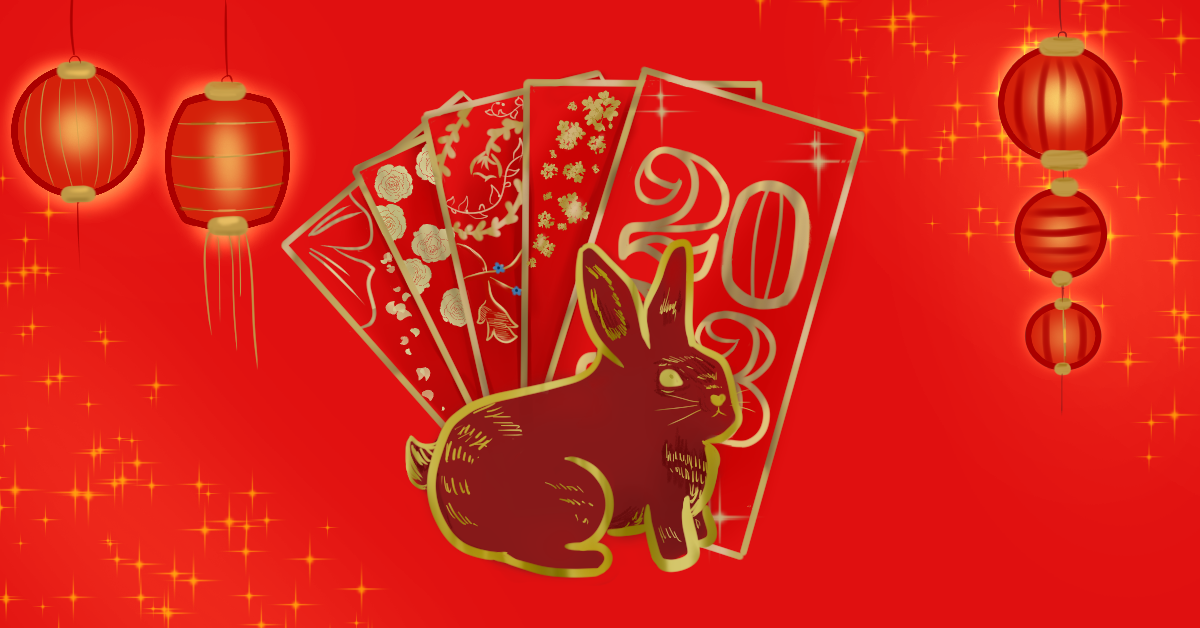Celebrating Chinese New Year 2023: The Year of the Rabbit
UTM students chime in on what it means to celebrate Chinese New Year, highlighting elements of family reunion and relaxation during the Chinese festival.
Weeks after the Gregorian calendar saw global celebrations and rejoice, people gathered on January 22, 2023, to celebrate Chinese New Year, also known as Lunar New Year and the Spring Festival. Alongside family and friends, people bid farewell to the Year of the Tiger and welcomed the Year of the Rabbit. According to legend, the rabbit is the fourth member of the Chinese Zodiac and is a symbol of endurance and success. Those born in the Year of the Rabbit are associated with vigilance, intelligence, and sharp-mindedness.
The Medium interviewed Chinese students at the University of Toronto Mississauga (UTM) to explore what Chinese New Year means to them and their typical celebrations. “It means a celebration of family reunion. The only time in a year that I can literally think of nothing else but just spending time with family to relax and eat. […] No more essays, GPA, and career building,” says Yuki Chen, a second-year student in Professional Writing & Communication (PWC) and Communication, Culture, Information & Technology.
Lily Yu, a second-year PWC student double minoring in English and creative writing, echoes a similar sentiment: “In China, families typically meet up with other families to congratulate the year. We eat dumplings during dinner and watch Chinese shows on television. The eve of the year is celebrated in family circles with elders. Elderly members often gift children red pockets with money.”
On January 20, 2022, UTM students gathered at the Student Centre for a hot pot feast—with the event name meaning “Spring Festival Gala” in Chinese. Students were handed red packets, and many wore red as they sat with their peers in the Blind Duck pub—decorated with red-coloured banners and streamers. Alongside performances and a duck mascot from the UTMSU, students celebrated the arrival of a new year amid a festive atmosphere.
According to legend, several centuries ago, in a Chinese village, a beast named Nian—literally meaning “year” in Chinese—would regularly attack the residents and wreak havoc upon New Year’s Eve by consuming animals, crops, and human flesh. Nian was afraid of loud noises, as well as the colour red. As such, the villagers scared him away using firecrackers and placing red-coloured decorations around their homes.
Several traditions are celebrated on Chinese New Year. At nighttime, fireworks, lanterns, and candles are common. Non-essential services such as offices, banks, and retail stores are closed for seven days. However, commercial spending and travel are encouraged, with hotels and large retail outlets remaining opened.
By tradition, Chinese New Year festivities last for 15 days. During the first day, also called the Spring Festival, people typically visit their elderly relatives as a means of strengthening familial bonds. During visits, guests are welcomed with tea and treats such as fresh or sugared fruits served on an octagonal-shaped tray named the “Tray of Togetherness.” Likewise, visitors are expected to come bearing gifts, particularly in the form of fruits such as oranges, mandarins, and tangerines—which symbolize prosperity. On the day of the Spring Festival, it is believed that forgoing meat would enhance a person’s longevity. The sentiment is based on the tradition that anything living should not be slaughtered on the primary day of the New Year.
On the final day of Chinese New Year, the Lantern Festival is celebrated, during which people hang glowing lanterns in temples and carry them throughout flourishing nighttime parades. As the dragon symbolizes good fortune in China, dragon dances are customary in celebrations. A long and colourful dragon is typically carried throughout the city streets by dancers. Ultimately, the sentiment behind the lantern festival is to cast away wandering evil spirits while strengthening healthy relationships between individuals, families, nature, and higher powers. On this day, it is tradition to eat sweet dumplings that imitate the shape of the full moon, which represents the spirit of reunion.
There are many traditions and practices for Chinese New Year that vary by family and community. Regardless, most revolve around welcoming the arrival of a hopeful and prosperous year alongside a reunited family—thus strengthening the vital connections that breathe life into each year.

